| Revista Umělec 2012/1 >> A Murder in Flatland: The Irruption of the Real in American Abstract Art | Lista de todas las ediciones | ||||||||||||
|
|||||||||||||
A Murder in Flatland: The Irruption of the Real in American Abstract ArtRevista Umělec 2012/113.03.2013 13:33 Douglas Dix | contemporartism | en cs de |
|||||||||||||
|
A nearly detective, but all archeological and art historical story about how one day the body of an attractive women was found by a river. Her name was Mary and she knew Kennedy. And Clement Greenberg. Somewhere among the complicated twists and turns of the ideological tensions of the Cold War, there may lie an answer – if not to the question of “Who is a murderer?” then at least as to how and why some realities meet and others pass each other by because – and thanks to – their origin in planes, spaces and points.
Immoral, licentious, anarchical, unscientific – call them by what names you will – yet, from an aesthetic point of view, those days of the Colour Revolt were the glorious childhood of Art in Flatland – a childhood, alas, that never ripened into manhood, nor even reached the blossom of youth. To live was then in itself a delight, because living implied seeing.
Edwin Abbott Abbott
What you see is what you see. Frank Stella
On October 12, 1964, a woman was found murdered on the towpath of the Chesapeake and Ohio Canal near Georgetown, Washington, D.C. about 300 meters to the west of the Francis Scott Key Bridge. She was a blonde, blue-eyed woman in her forties (although she looked younger, and struck the investigating officers as being very attractive). She was wearing a blue angora sweater over a gray sweater, light slacks, Ray-Ban Wayfarer sunglasses, kid-leather gloves, but no underwear. The only thing in her pocket was a tube of Revlon Cherries in the Snow lipstick. Her canvas sneakers were speckled with paint. She had been killed execution style – with a shot through the head, and another through the heart. To the casual observer it seemed like just another unfortunate urban incident – a mugging or attempted rape gone wrong, with fatal consequences. After all, the crime was one of among 132 murders that were committed in the city in 1964 (if the woman hadn’t struggled, she might have been one of the 2,605 aggravated assaults, 2,279 robberies, or 96 rapes that took place that year), and, although the crime had taken place around noon, the towpath was secluded enough to be dangerous – especially for an unaccompanied female. It seemed to be just another homicide among many – perhaps even a bit mundane. However, there was nothing mundane whatsoever about the victim: she was May Pinchot Meyer, an informal member of what would later be called “the Georgetown Ladies Social Club” – an understated label, because these “ladies” were directly associated with some of the most powerful men in the world, and some of them would go on to become the most powerful women in the world (for example Katherine Graham, who, after her husband’s suicide in 1963, would go on to become the publisher of The Washington Post for two decades, including the period when the newspaper helped overthrow the Presidency of Richard Nixon).1 While Mary Pinchot Meyer was certainly one of these “ladies,” she also had a life that was apart from them – indeed several lives. She considered herself an artist and was a close friend of the abstract sculptor Anne Truitt, with whom she shared a studio. She was the former lover of “post-painterly” abstract artist Kenneth Noland, and his paintings of concentric rings of color on a flat picture plane, paint applied brushlessly, influenced her own paintings considerably. Through Noland, she was a close acquaintance of influential New York art critic Clement Greenberg and his wife Jenny. Beyond the art world, she also had a more-than-passing acquaintance with LSD guru Timothy Leary during his time at Harvard University. She was the former wife of CIA agent Cord Meyer (then head of the International Organizations Division of the CIA), and through him knew, as a family friend, James Jesus Angleton, head of Counter-Intelligence at the CIA for a quarter of a century (and already, then, a living legend). Her sister, Toni, was married to Ben Bradlee, then Washington Bureau Chief of Newsweek and a very close friend to President John F. Kennedy. And, unbeknownst to any of them during her life except for Angleton (whose job was to know – especially concerning what could become a threat to the President), she was the former mistress of JFK and arguably the only woman whose opinion he unreservedly respected. My intention in this essay is to act as something of an “aesthetic Sherlock Holmes” (or perhaps Agatha Christie’s Hercule Poirot, as he was more of an aesthete) in order to unravel certain threads of this story, tracking down and magnifying selected elements – although not with an eye to identifying the “who-done-it” of Mary’s murder (something which may never be known for certain), but rather the “why-done-it” of certain aspects of American abstract art in the early 60s, with Mary’s art functioning as an exceptional case that sheds light on the main currents of that art. While the physical geography of the setting of this “case” is primarily the Georgetown area of Washington, D.C., the conceptual geography is a place I designate “Flatland” – a name I have borrowed from the famous 1884 comical primer of multi-dimensional geometries, Flatland: A Romance of Many Dimensions, by Edwin Abbott Abbott,2 and by which I will designate the aesthetic world of Clement Greenberg and those artists he placed in the category of “Post-Painterly Abstraction” (also called the Washington Color School and often overlapping with what has been termed Hard Edge Abstract and with Color Field painting). My objective is to bring to light an “irruption of the real” within American abstract art: to reveal that an art form (and its criticism) which saw itself as purely formalist and detached from ideological, social, political, and historical concerns was, in truth, absolutely immersed in the “real” of not merely its socio-historical context (that goes without saying), but also in a vast web of ideological and political motives. This “investigation” is undertaken with an eye to elucidating the following key point: art is as much what is made, as it is what is made of it.
Mary Pinchot Meyer & the “Greenberg Effect”
It has been established by now, it would seem, that the irreducibility of pictorial art consists in but two constitutive conventions or norms: flatness and the delimitation of flatness. Clement Greenberg, “After Abstract Expressionism”
…it is not surprising that it was Greenberg’s followers who produced the most powerful ‘Greenberg effect.’ Artists working ten years after their most intense contact with the man began to paint canvases that finally ‘fulfilled’ the critic’s admonitions. Caroline, A. Jones. Eyesight Alone
Continuing to follow her steps backwards, one would see her walk up 34th Street two blocks to N Street, where she would have turned eastwards for 50 meters to 3325 (a small brick townhouse owned by her sister Tony and Ben Bradlee), and back down a little alleyway to her studio behind, where one would have found laid out to dry one of her last completed paintings, Half-Light. It was a 1 ½ meter square canvas upon which a circular mandala of color had been applied against a black background – the circle composed of four quadrants of muted colors: lavender, sky blue, olive green, and brown ochre. There is no perspective, there are no dimensions beyond the flatness of the picture plane, and no brush strokes or evidence of human expression – merely the pure application of color in differing tones, and the effect their juxtaposition makes. Taken by itself, the painting is representative of the color field painting of the Washington Color School. That Mary had an awareness of this milieu and its techniques can be seen in an extract of her diary, published as part of a brochure composed for her one posthumous show in 1967: “These paintings are not linear; the edges simply exist as a byproduct of the color fields. Where one color stops and another starts there is an edge, but it is the result and not the cause of the color shapes or forms. In my paintings the color is the form.” This aesthetic knowledge did not arise out of a merely passing awareness of the Washington Color School: as mentioned earlier, Mary was the lover of one of its chief practitioners, Ken Noland; was one of the closest friends of another, Anne Truitt; and had more than a passing acquaintance with the chief critical inspiration of the group, Clement Greenberg. Washington had been more or less a backwater in the American art world during the 1950s. The Institute for Contemporary Arts in D.C. had tried to track the experiments that were then occurring in New York, and was the center for artistic activity until the Jefferson Place Gallery, entirely dedicated to abstract art, opened in 1957. It was at this gallery that Mary began to increasingly spend time as an assistant, as she had needed something to distract her from a family tragedy she had experienced around that time: her son with Cord Meyer had been knocked down and killed by a car in December, 1956 – an event which spelled the final blow to her already failing marriage with Meyer. It was at the Jefferson Place Gallery, also, that she probably met the artist Ken Noland, who became Mary’s lover in 1957, and who would later say of her during that period, “She was lost, and she needed something to be attached to and the gallery and art gave her that.”4 Half-Light and Mary’s other paintings from the period shared something in common with the series of “target” paintings Ken Noland was doing during the time of their relationship (from 1957-1959) – concentric circles of color on a square canvas. To explore what this “something-in-common” entailed, it is necessary to delineate a first, wider circle of context around Noland’s efforts as an artist, and especially the relation between his art and the commentary of influential New York art critic Clement Greenberg, without whose backing Noland’s work would most likely never have distinguished itself from the ocean of abstract art emerging in the U.S.A. in that era. Noland had met and befriended Greenberg at the famous Black Mountain College in 1950 (faculty of which included such avant-garde luminaries as Josef Albers, Willem de Kooning, Franz Kline, Walter Gropius, Robert Motherwell, John Cage, Robert Creeley, Charles Olson, Robert Duncan, Merce Cunningham, and many others), and it was during a trip to visit Greenberg in New York that Noland made with Morris Louis in 1953 that they both encountered the key aesthetic inspiration that would lead to their launching the Washington Color School: Greenberg showed Noland and Louis Morris a painting by Helen Frankenthaler (then lover of Greenberg, and from 1958 the wife of Robert Motherwell) entitled Mountains and Sea. Frankenthaler’s innovation was the technique of “soak-staining” – the use of turpentine to dilute the oil paints, and the application of the thinned color washes directly to unprepared canvases, causing it to absorb the color as a stain – the effect, in Frankenthaler’s paintings, being close to a watercolor made with oils. Noland applied the technique to his series of “target” paintings, experimenting with differing versions of these circles for a number of years – distinct versus fuzzy lines, thin versus thick bands, pale versus chromatic colors, untreated versus painted backgrounds. He wrote of the paintings: “I knew what a circle could do. Both eyes focus on it. It stamps itself out like a dot. This, in turn, causes one’s vision to spread, as in Tantric art.” The reference to Tantric art is apt not only because of the literal resonances between some of Noland’s paintings and the Sri Yantra mandala (such as can be seen in Noland’s 1959 painting Split), but also because of the influence of the therapy of Wilhelm Reich on Noland, with its emphasis on the heightening of the senses, affect and expression, which Shepherd Steiner likened to a Tantric “optical orgasm” (“an optical orgasm that arcs at each and every moment toward a future, specifically an object lesson in how to prolong and expand the pleasure next time around”),5 and which Carl Belz described in somewhat less dramatic (but still sexual) terms as a “feeling of release I experienced while standing before the pictures themselves, a feeling I associated above all with their color, which was everywhere flowing and spreading naturally, everywhere clear and open, everywhere emitting life-giving light, everywhere generous.”6 These relatively recent critical responses are themselves quite “generous,” and seem striking in regard to their focus on the visceral impact of these paintings on the senses, and ultimately the body – especially when one takes into consideration the considerably more restricted, formalist approach to these paintings originated by Clement Greenberg, whose own critical discourse delimited aesthetic consideration of them to “eyesight alone.”7 Obviously Greenberg’s delimitation of the senses and especially of the body (both in the creation and reception of art) has been transgressed by both the critical responses of both Steiner and Belz; however, one can still detect the faint but unmistakable resonance of the critical terminology of Clement Greenberg in Steiner’s stress on the term “optical” (echoing Greenberg’s concept of “optical space” and delimitation of the senses) and Belz’s use of the phrasing “clear and open” (“clarity and openness” being a key phrase from Greenberg’s seminal essay for the exhibit on Post-Painterly Abstraction in 1964). Critics were not the only ones who came under Greenberg’s spell: it was also true of artists – Caroline A. Jones’s term for this is the “Greenberg effect,” which she uses to designate the recursive loop whereby Greenberg’s art criticism affected not only other critics, but also artists and their works…and no one as much as Ken Noland. To understand Greenberg’s role in supporting and influencing Noland’s works, one might begin with Noland’s conception of the “one-shot painting” – a conception that clearly changed over time, and which I believe changed distinctly because of the “Greenberg effect.” When Noland first referred to his paintings in this period as “one-shot” paintings, his reference was clearly to the act of composition itself: “Morris and I used to talk a lot about what we called ‘one-shot’ painting…if you were in touch with what you were doing, you had to do it only one time. Each thing you did was just done that one time, with no afterthoughts and it has to stand. We wanted to have this happen just out of the use of the materials.”8 The act of composition described here seems to have in mind the kind of “one-shot” painting Jackson Pollock was engaged in where the painting “freezes” the very action of inspiration which takes place entirely at the moment of composition – the way a jazz recording froze the moment of improvisation (Noland embraced this comparison, calling what he and Louis Morris were doing in its earliest phase “jam painting,” after jazz jam sessions). This would change following the “event” of their transformative visit to New York in 1953 when Greenberg showed them the paintings of Helen Frankenthaler: suddenly their compositional techniques changed radically from composition “in the moment” to a far more calculated composition. Preparation for the painting was painstaking, inspiration and composition accomplished well in advance of the application of paint, and the “one-shot” aspect was now seen as a result of the fact that the thinned, acrylic-based paints were being applied to an unprimed canvas, a “one-shot” process that demanded great care and disallowed any modifications (so that “one shot” now meant the one-shot at getting it right). Then the emphasis shifted even further: from an emphasis on “one-shot” composition to an emphasis on “one-shot” reception. By 1975, Tom Wolfe’s mocking critique of American postmodern art, The Painted Word (1975), would compare Noland’s “one-shot” art with a western quick-draw gunman: “Noland was known as the fastest painter alive (i.e., one could see his pictures faster than anybody’s else’s). The explanation of why that was important took considerably longer.”9 Even more serious critics than Wolfe would tend to interpret “one-shot” as having to do with reception: for example, Carl Belz wrote, “…the one-shot painting wasn’t identified with how effectively it had been composed but how effectively it could be seen…Compositionally speaking, the pictures could be seen in an instant, one shot, dead center.”10 Clearly in this shift from improvisatory composition (“one-shot” of inspiration), to highly controlled composition (“one-shot” at realization), to audience reception (“one-shot” at “rendering visible,” to use Paul Klee’s phrase), something was at work, and this “something” was the “Greenberg effect.” Greenberg had written, in his 1955 essay American-Type Painting, “…in the end these pictures, like all others, stand or fall by their unity as taken in at a single glance,”11 and now his perspective ruled. Greenberg’s criticism acted simultaneously not only to strip the paintings of their previous multi-dimensional, “thick” descriptions evoking such aspects as Tantric art, impulses born of Reichian therapy, and visual enactment of jazz-like improvisation, but also to affect the paintings themselves, which became increasingly “hard-edged,” “optical,” “flat” – or, in the term Greenberg used to nominate all of these traits, “post-painterly” (because the paintings did not seem to involve brush strokes or other techniques that would belie human expression). Noland’s paintings incarnated the “Greenberg effect,” and, consequently, so did those of Mary Pinchot Meyer: they both painted works that seemed to float freely and purely beyond any particular cultural space and any particular historical time…and yet, as we shall see, they were absolutely of their time and place.
Clement Greenberg & the Geography of Flatland
I speak now from the aesthetic and artistic point of view when I say that life with us is dull; aesthetically and artistically, very dull indeed. How can it be otherwise, when all one’s prospect, all one’s landscapes, historical pieces, portraits, flowers, still life, are nothing but a single line, with no varieties except degrees of brightness and obscurity? Edwin Abbott Abbott, Flatland: A Romance of Many Dimensions
Henceforth a paint should be applied only in hard linear geometries, and you should get the whole painting at once, ‘fast,’ to use the going phrase. (No Loitering.) Kenneth Noland, formerly of Morris Louis’s misty Washington School, was now considered the fastest painter in the business. Tom Wolfe, The Painted Word
Within Greenberg’s teleology, expressed implicitly in varying degrees in his essays from the 50s, and most explicitly in his 1960 essay Modernist Painting, the various arts were seemingly necessarily evolving in the direction towards narrowing their scope to the special “area of competence” of each determined by “all that was unique in the nature of its medium.” There was a degree of truth to Greenberg’s observations, as certainly in the 50s and 60s literature was reducing itself to its “literariness” (as evidenced by such movements as the nouveau roman and the Oulipo group in France, and in the United States by the self-reflexive literary experimentation of writers such as John Barth, Donald Barthelme, and Vladimir Nabokov), cinema was reflecting on its own “cinematicness” (especially the Nouvelle Vague), music was reflecting on the relation between order and chance, rhythm and repetition, sound and silence, and harmony, noise, and timbre (as evidenced in the works of Pierre Boulez, John Cage, and Karlheinz Stockhausen), and in the realm of painting various painters were exploring the relation between form and formlessness, the framed and unframed, representation and abstraction, easel painting and action painting, and a variety of other issues. However, Greenberg’s assessment of the situation imperceptibly slipped between a description of these phenomena within the visual arts and a prescription for the future of the visual arts:
In his 1978 postscript to the essay Greenberg tried to backpedal a bit, shifting his wording from prescriptive back to descriptive, and writing of himself in the 3rd person, “a close reading of what he writes will find nothing at all to indicate that he subscribes to, believes in, the things that he adumbrates,”14 but by 1978 it was already too late: Greenberg’s assessment had been taken by artists in the early 1960s as a conflation of historical description and evolutionary desiderata. Artists accepted Greenberg’s commentary as a program of painting to be embarked upon, with its core desideratum being flatness: “It was the stressing of the ineluctable flatness of the surface that remained, however, more fundamental than anything else to the processes by which pictorial art criticized and defined itself under Modernism. For flatness alone was unique and exclusive to pictorial art.”15 No artists followed this dictum of flatness with greater assiduity than the Washington Color School artists, and especially Morris Louis, Kenneth Noland, and, by virtue of their influence upon her, Mary Pinchot Meyer. Greenberg wrote the catalog for a 1964 exhibition of their works and those of others that he categorized and nominated “Post-Painterly Abstraction,” deriving the term “post-painterly” from the painterly/linearity distinction of Swiss art historian Heinrich Wölfflin, and clearly brandishing the term to extol artists who went the (to him) necessary step towards even further flatness – further even than the Abstract Expressionists, which can be seen in the following comparison he makes written for an exhibition being sent abroad by the United State Information Agency: “…hard-edged, flat-colored, high-colored, linear, in contrast with the smudgy, deep-colored, turbid painterliness of the 1940s and ‘50s.”16 In an article on Louis and Noland, he wrote that Noland’s work “...conveys a sense not only of color as somehow disembodied, and therefore more purely optical, but also of color as a thing that opens and expands the picture plane...Thanks to their centeredness and their symmetry, the disks, the diamonds, and the crossed arms create a revolving movement that spins out over painted surfaces and beyond the four sides of the picture to evoke...limitless space, weightlessness, air.”17 The greater the claims of flatness, the greater the claims of expansiveness within that single dimension; however, not everyone was buying Greenberg’s claim that painters like Morris and Noland were “serious candidates for major status.” The most mocking words were those of Tom Wolfe in his 1975 book The Painted Word, which characterized Greenberg and Post-Painterly Abstraction with the following bitingly sarcastic description:
At the time these words were published (1975), Wolfe’s send-up of Greenberg fell as flat as the paintings of Noland and Morris, for Greenberg’s voice within the art world still carried too much weight; however, just a few years later in 1984, Mark Tansey’s could bring off a painting, The Myth of Depth, which mocked the “Greenberg group,” portraying Jackson Pollack as a Christ-like figure walking across the surface of the ocean (the picture plane), while his “disciples” stand in a boat watching (Greenberg excitedly pointing out Pollack’s “miracle” to an awed Ken Noland, Helen Frankenthaler, and Mark Rothko, while Robert Motherwell looks into the water skeptically and Arshile Gorky holds a life preserver behind him). The same period saw a whole range of critiques of Greenberg’s influence on art, beginning with the problem implied by Tansey’s painting: Greenberg was accused by many of an undue influence on postmodern art – the “Greenberg effect” mentioned above. Art critics and commentators had historically retained a degree of distance from the art they were commenting upon: modern art was supposed to be autonomously generated by artists, and then received by audiences and critics. Greenberg, who had himself trumpeted the necessity of art’s autonomy in his essays, in practice was involved with the art and artists he commented upon at a much earlier stage in the creative process. This involvement was not merely the fact that his essays clearly indicated the “way” (such as his early advocacy of Pollock and emphasis on the flatness of the picture plane shown in Tansey’s painting): especially in the cases of Noland and Louis, Greenberg’s theories arguably became prescriptive for them, shaping the direction of their work, while at the same time he was deliberately singing their praises in his art criticism (implicitly for having followed his theories). The most extreme form of intrusion Greenberg has been charged with is actually physically changing the paintings of some of his protégés, such as his posthumous editing of some of Morris Louis’ canvases. Perhaps one of the greatest ironies of Greenberg’s career is that it began, in the essay Avant-Garde and Kitsch, with a staunch warning against the dangers art faced in a materialist, consumerist society, and ended with Greenberg becoming one of the foremost arbiters of value within the postmodern art market (with Greenberg himself taking great economic advantage from his own cultural arbitration). It is not the “Greenberg effect” per se that has been the greatest target of the criticism directed at Greenberg; after all, influential critics cannot be blamed for the power of their influence. What critics found most objectionable about Greenberg’s influence was the shape of that influence, and primarily its reduction of art to, as the title of Caroline A. Jones’s book terms it, “eyesight alone” or opticality. In Jones’ assessment, within Greenberg’s critical perspective “the bifurcated viewing subject experiences herself as optical (empirical, phenomenological, positivist) rather than pictorial (narrative, internal to the pictured illusion),”19 and consequently such a critical sensibility excludes any references either to the reception of the other senses or to representation and narrative. To delineate this further, what Greenberg also excludes from the domain of art is anything expressive or conceptual (which explains his dislike of Duchamp and any conceptual art), and anything social, political, or historical (save for the history the work is embedded within). What does that leave? Karen Wilkin’s description of Color Field painting could also be a description of Greenberg’s aesthetic as seen from its best vantage: “Any lingering vestiges of the painting’s long history as depiction disappear, and we are faced with pure, eloquent, wordless seeing.”20 The question is, what do we see? From a more neutral vantage, one could take Greenberg’s assessment of the paintings of Barnett Newman as a self-characterization of his own stance vis-à-vis what should remain extrinsic to painting: “There is no program, no polemic, in these paintings. They do not intend to make a point, let alone shock or startle.”21 Finally, seen from a critical vantage, there are Robert Hughes’s words, “damning with faint praise” Greenberg’s chosen artists, and what Greenberg and other critics he influenced wrote about them:
And this from a cultural critic who is considered rather conservative. Obviously if Greenberg’s criticism could be faulted for its narrowness by a critic like Hughes, he was that much more open to the criticism of the left-oriented cultural critique of the 80s and 90s which openly attacked him and his followers for his exclusion of the socio-political from the realm of painting. Examined more closely, Greenberg’s neo-Kantian aesthetic formalism is not as airlessly apolitical as it at first seems. Caroline A. Jones took a passing metaphorical reference by Greenberg to the sensibility of the 60s as being “the sensibility of a period of détente” and makes it quite literal:
This juxtaposition of Greenberg’s apolitical criticism (espousing apolitical art) with the hyper-politicized, binary reality of the Cold War may appear to be merely a swipe at an ideological enemy, but the facts bear out Jones’s point. While Greenberg had been a leftist prior to the war, after the war, in 1950, Greenberg became a part of the CIA-sponsored American Committee for Cultural Freedom, wrote articles for the CIA-sponsored journal Commentary, gave talks on Voice of America (indeed, his famous essay Modernist Painting originated as a cultural-propaganda talk for VOA), and, as mentioned above, wrote the catalog for an exhibition of American painting being sent abroad by the United States Information Agency (an agency dedicated to disseminating pro-American propaganda abroad). The connection between American artists, critics, museums and the various forces of government propaganda and the CIA in the 50s and 60s has been well documented – first in an article entitled “Abstract Expressionism, Weapon of the Cold War,” by Eva Cockroft,24 then by Frances Stonor Saunders in her book The Cultural Cold War: The CIA and the World of Arts and Letters,25 and most recently by Michael L. Krenn in his book Fall-Out Shelters for the Human Spirit.26 As Stonor comments, echoing the points made above, “One of the extraordinary features of the role that American painting played in the cultural Cold War is not the fact alone that it became part of this enterprise, but that a movement which so deliberately declared itself to be apolitical could become so intensely politicized.”27 Certainly it was partly a matter of expediency on the side of the CIA, and Stonor cites Donald Jameson, a CIA agent, explaining the rationale behind the CIA support of American abstract art as follows: “We recognized that this was the kind of art that did not have anything to do with socialist realism, and made socialist realism look even more stylized and more rigid and confined than it was” (260). However, the artists themselves were not innocent dupes: Motherwell, Calder, Pollock, and Baziotes were all members of the American Committee for Cultural Freedom, with Rothko and Gottlieb sympathetic to the committee’s directive to purge the art world of communist influences (indeed the only Abstract Expressionist who continued to be allied with the left was Ad Reinhardt, who, as Stonor points out, was the only Abstract Expressionist to participate in the March on Washington for Black Rights in 1963). Examined from this vantage, hyper-formalist abstract artwork (and its criticism) suddenly takes on a different, highly politicized role in a binary conflict with Socialist Realism. What I find most disturbing about Greenberg’s incursion into the cultural field is his jingoistic promotion of American art at the expense of European art: this involved a teleological re-writing of art history where European art was de-emphasized, and seen to be merely a preparation of the “next big step” in evolution – American painting. Jones characterizes Greenberg’s distortion of art history as an “inexorable” evolution leading to their culmination in American abstract painting (first Abstract Expressionism, and then the apogee of “Post-Painterly Abstraction”). In his critical practice this was not merely a result of the affirmation of those formal qualities that characterized these works (flatness, purity, opticality), but also as a result of the rewriting of the history of European painting, where the abstraction of painters such as Mondrian or Kandinsky is stripped of its ideational content, and rather than being seen as the innovative art that it was, is denigrated as a sort of false start, as can be seen in this sentence about Mondrian from his essay Modernist Painting: “Far from incurring the danger of arbitrariness, Mondrian’s art proves, as time passes, almost too disciplined, almost too tradition- and convention-bound in certain respects; once we have gotten used to its utter abstractness, we realize that it is more conservative in its color, for instance, as well as in its subservience to the frame, than the last paintings of Monet.”28 In his catalog-essay for the “Post-Painterly Abstraction” exhibition, Greenberg even goes so far as to deny that any of the thirty or so American artists on exhibition have been influenced at all by European or Russian abstraction (if they have been influenced by anyone, he claims, it has been from the Abstract Expressionists): “Some of the artists in this exhibition look ‘hard-edged,’ but this by itself does not account for their inclusion. They are included because they have won their ‘hardness’ from the ‘softness’ of Painterly Abstraction; they have not inherited it from Mondrian, the Bauhaus, Suprematism, or anything else that came before.”29 From the perspective of a half-century later this boast seems almost embarrassing in its disingenuous attempt to erase the influence of European abstraction. This view of the history of American abstract painting as a form of creatio ex nihilio is naïve at best, but when coupled with a Cold War mentality and a mindset gauged to American imperial ascendency and exceptionalism, it represents a dangerously reductive form of historical distortion, if not overt propaganda (and given its “triumph,” no less dangerous than Socialist Realism). Mark Tansey’s 1984 painting, Triumph of the New York School, gives a satirical and yet accurate portrayal of what happened in the postwar decades: the antiquated European “art army” (garbed in French World War I uniforms and armed with nothing more than lances) surrenders to the modern American army (with their high-tech weaponry) – André Breton signing the documents of surrender while “General Greenberg” stands by, casually, with hands in pocket. In the right foreground his critical rival, Harold Rosenberg, stands watching the proceedings with his hands behind his back; behind Rosenberg is Robert Motherwell leaning a bit backwards, as if in surprise; Pollock, to the left of Greenberg, smokes complacently; and de Kooning, Noland, and Rothko can also be identified (and is that Robert Rauschenberg or Cy Twombly staring across at Duchamp in the background – Duchamp seemingly about to slink over to the American “side”?). There’s no disputing a certain truth to the painting, as, after all, the center of gravity of the art world did shift from one side of the Atlantic to the other in the immediate postwar period; however there’s equally no disputing the fact that history will come to see this transition in different terms than it saw itself then, and that in 1984, when this painting was done, that reassessment was well under way.
1 The Georgetown Ladies’ Social Club: Power, Passion, and Politics in the Nation’s Capital, C. David Heymann (New York: Simon & Schuster, 2005). 2 Flatland: A Romance of Many Dimensions, by Edwin A. Abbott (Oxford: Oxford University Press, 2006). 3 The period of Wisner’s tenure as the head of covert operations is covered in Hugh Wildford’s book The Mighty Wurlitzer: How the CIA Played America (Cambridge: Harvard University Press, 2008). 4 A Very Private Woman: The Life and Unsolved Murder of Presidential Mistress Mary Meyer, Nina Burleigh (New York: Bantam Books, 2000), 148. 5 Shepherd Steiner, “Narrating a Proto-Minimalist Misfire. Or Noland’s Largeness...” New Models of Abstraction, http://abstraction.uwaterloo.ca. 6 Carl Belz, “Fields of Dreams,” from Color as Field: American Painting 1950-1975 (New Haven & London: Yale University Press, 2007), 98. 7 This term is used in Catherine A. Jones’ brilliant book, Eyesight Alone: Clement Greenberg’s Modernism and the Bureaucratization of the Senses (Chicago: University of Chicago Press, 2006). 8 Quoted in Kenneth Noland, The Circle Paintings, 1956-1963, Wiliam Agee (Houston: The Museum of Fine Arts, Houston, 1993). 9 Tom Wolfe, The Painted Word (New York: Farrar, Straus, & Giroux, 1975). 10 Carl Belz, “Fields of Dreams,” from Color as Field: American Painting 1950-1975 (New Haven & London: Yale University Press, 2007), 90. 11 Clement Greenberg, Art & Culture: Critical Essays (Boston: Beacon Press, 1961, 1989), 225. 12 Clement Greenberg, Art & Culture: Critical Essays (Boston: Beacon Press, 1961, 1989), 226. 13 Clement Greenberg, “Modernist Painting,” (original lecture Voice of America, 1960), Modern Art and Modernism: A Critical Anthology. ed. Francis Frascina and Charles Harrison (London: Sage Publications, 1982). 14 Clement Greenberg, “Modernist Painting,” Postscript 1978 (original lecture Voice of America, 1960), Modern Art and Modernism: A Critical Anthology. ed. Francis Frascina and Charles Harrison (London: Sage Publications, 1982). 15 “Modernist Painting,” Clement Greenberg, from Modern Art and Modernism: A Critical Anthology. ed. Francis Frascina and Charles Harrison, (London: Harper & Row, 1982). 16 Catherine A. Jones, Eyesight Alone: Clement Greenberg’s Modernism and the Bureaucratization of the Senses (Chicago: University of Chicago Press, 2006), 309. 17 Clement Greenberg, “Louis and Noland,” from The Collected Essays and Criticism, Volume 4: Modernism with a Vengeance (Chicago: University of Chicago Press, 1995), 94-100. 18 Tom Wolfe, The Painted Word (New York: Farrar, Straus, & Giroux, 1975). 19 Catherine A. Jones, Eyesight Alone: Clement Greenberg’s Modernism and the Bureaucratization of the Senses (Chicago: University of Chicago Press, 2006), 14-15. 20 Karen, Wilkin, Color as Field: American Painting 1950-1975 (New Haven & London: Yale University Press, 2007), 22. 21 Clement Greenberg, “Introduction to an Exhibition of Barnett Newman,” from The Collected Essays and Criticism: Modernism with a Vengeance, 1957-1969 (Chicago: University of Chicago Press, 1995), 54. 22 Robert Hughes, The Shock of the New: Art and the Century of Change (London: Thames & Hudson, 1980), 156. 24 Artforum, vol.15, no. 10, June, 1972. 25 The Cultural Cold War: The CIA and the World of Arts and Letters, Frances Stonor Saunders (New York: New York Press, 1999). 26 Fall-Out Shelters for the Human Spirit, Michael L. Krenn (Chapel Hill & London: University of North Carolina Press, 2005). 28 Clement Greenberg, “Modernist Painting,” (original lecture Voice of America, 1960), Modern Art and Modernism: A Critical Anthology. ed. Francis Frascina and Charles Harrison (London: Sage Publications, 1982).
13.03.2013 13:33
Artículos recomendados
|
|||||||||||||
|
04.02.2020 10:17
Letošní 50. ročník Art Basel přilákal celkem 93 000 návštěvníků a sběratelů z 80 zemí světa. 290 prémiových galerií představilo umělecká díla od počátku 20. století až po současnost. Hlavní sektor přehlídky, tradičně v prvním patře výstavního prostoru, představil 232 předních galerií z celého světa nabízející umění nejvyšší kvality. Veletrh ukázal vzestupný trend prodeje prostřednictvím galerií jak soukromým sbírkám, tak i institucím. Kromě hlavního veletrhu stály za návštěvu i ty přidružené: Volta, Liste a Photo Basel, k tomu doprovodné programy a výstavy v místních institucích, které kvalitou daleko přesahují hranice města tj. Kunsthalle Basel, Kunstmuseum, Tinguely muzeum nebo Fondation Beyeler.
|







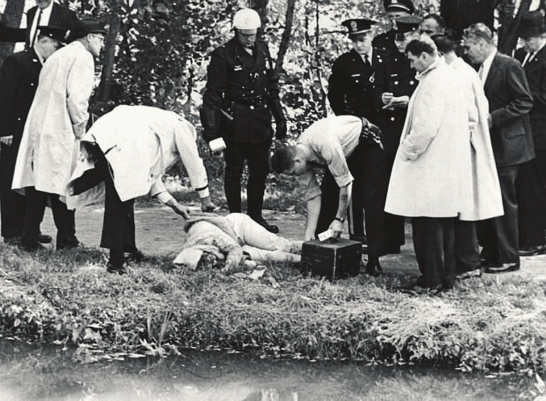
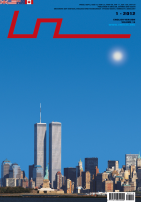






















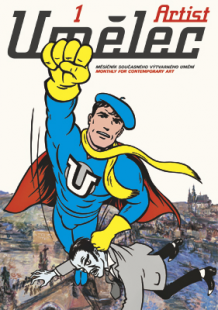




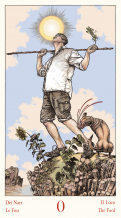
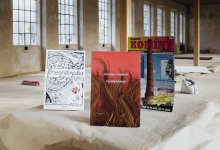
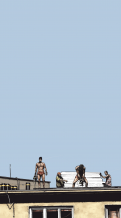
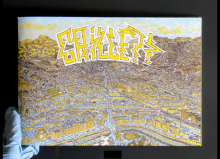


 New book by I.M.Jirous in English at our online bookshop.
New book by I.M.Jirous in English at our online bookshop.
Comentarios
Actualmente no hay comentariosAgregar nuevo comentario